Workshop on "Transformational Materials"
Workshop
- Datum: 08.06.2021
- Uhrzeit: 09:50 - 15:00
- Vortragende: Prof. Prineha Narang, Prof. Ronny Thomale, Prof. Titus Neupert, Prof. Thomas Heine
- Ort: Max-Planck-Institut für Mikrostrukturphysik, Weinberg 2, 06120 Halle (Saale)
- Raum: Online / Please click here to register in advance
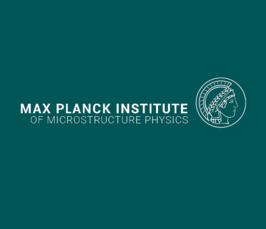
PROGRAM
09:50 am - Introduction
10:00 am - Topology in quantum matter: Beyond the rules of the game - Prof. Titus Neupert, University of Zurich
11:00 am - Predicting and controlling emergent behavior in quantum matter - Prof. Prineha Narang, Harvard University
12:00 am - Break
01:00 pm - The new frontier - collective phenomena in synthetic matter - Prof. Ronny Thomale, University Würzburg
02:00 pm - The chemistry way towards quasiparticle physics - Prof. Thomas Heine, TU Dresden
Topology in quantum matter: beyond the rules of the game
Abstract
Topological quantum materials have revolutionized research in condensed matter physics over the past two decades. The discoveries followed a simple theoretical recipe of studying ground states of insulators and classifying them allowing local deformations while keeping a band gap intact. I will discuss three routes along which we can rethink this set of rules, and explain the new physics enabled by each of them. First, by transitioning to topological descriptions of open, non-Hermitian systems, the notion of a ground state looses its meaning. At the example of the most fundamental three-dimensional topological phase, the exceptional topological insulator, which can be induced from a Weyl semimetal, I will explain key characteristics of non-Hermitian topology. Second, I will introduce so-called delicate topological phases, by restricting local deformations not only to the valence, but also the conduction bands of an insulator. Third, I will discuss a new theoretical tool, the Wannier cut, and explain how it can be used to identify systems that show universally quantized surface responses, even if all bands are filled. All of these twists to topology are formulated theoretically and await to be discovered experimentally in quantum materials, moving research on topological phases of matter beyond the present paradigms.
Titus Neupert
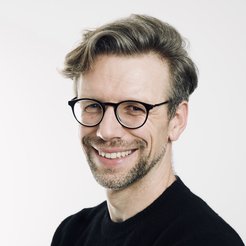
Titus Neupert is a theoretical condensed matter physicist and associate professor at the University of Zurich. His research covers many aspects of topological states of matter, including topological insulators, superconductors, and intrinsic topological order. In addition, he is interested in machine learning techniques, quantum computing, and numerical methods for many-body quantum systems. In particular, he is known for work on higher-order topological insulators and fractional Chern insulators. Titus Neupert obtained his PhD from ETH Zurich (2013), working as well at the Paul Scherrer Institute, and was a postdoctoral fellow at the Princeton Center for Theoretical Science before joining the University of Zurich in 2016.
Predicting and controlling emergent behavior in quantum matter
Abstract
Quantum matter hosts spectacular nonequilibrium effects and unconventional transport phenomena, but many of these remain challenging to predict and consequently, technologically unexplored. My group’s research focuses on how quantum matter behaves, particularly away from equilibrium, and how we can harness emergent effects in these systems. By creating predictive theoretical and computational approaches to study dynamics, decoherence and correlations in matter, our work enables technologies that are inherently more powerful than their classical counterparts, ranging from scalable quantum information processing to ultra-high efficiency optoelectronic and energy conversion systems. Capturing these phenomena poses unique computational and theoretical challenges. In fact, the simultaneous contributions of processes that occur on many time and length-scales has eluded state-of-the-art computational physics and model Hamiltonian approaches alike, necessitating a new lens. In this context, I will focus on our work on approaches to describe excited-states in quantum matter, including electron-electron and electron-phonon interactions beyond leading order, and predicting emergent states introduced by external drives. Our approach brings photonics and condensed matter together to create unexpected and useful properties, including surprisingly long coherence times and propagation lengths, as well as enabling new quantum probes of quantum matter. I will also discuss our methods in spatially-resolved non-equilibrium transport in quantum matter. By introducing GPU-accelerated large-scale transport frameworks that retain microscopic scattering, we are overcoming long-standing barriers in the field and taking transport in matter to exascale computing. Finally, I will share our vision for the future towards crossing the finite-extended system divide, and leveraging the power of both classical high-performance computing and quantum computation paradigms in predicting new phenomena in quantum matter and related devices.
Prineha Narang
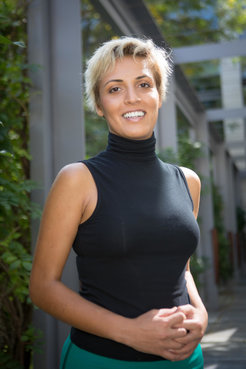
Prineha Narang came to Harvard University from the Massachusetts Institute of Technology where she worked as a Research Scholar in Condensed Matter Theory in the Department of Physics. She received an M.S. and Ph.D. in Applied Physics from the California Institute of Technology (Caltech). Prineha’s work has been recognized by many awards and special designations, including a Friedrich Wilhelm Bessel Research Award from the Alexander von Humboldt Foundation and the IUPAP Young Scientist Prize in Computational Physics in 2021, an NSF CAREER Award in 2020, being named a Moore Inventor Fellow by the Gordon and Betty Moore Foundation for pioneering innovations in quantum science, CIFAR Azrieli Global Scholar by the Canadian Institute for Advanced Research, and a Top Innovator by MIT Tech Review (MIT TR35).
The new frontier - collective phenomena in synthetic matter
Abstract
Recent developments in condensed matter research have witnessed an uprise in synthetic materials and metamaterials, reaching from photonic crystals and ultracold atomic gases all the way to quantum electronic platforms such as graphene and twisted material heterostructures. As rich as their free particle/single mode behaviour has been in terms of topology and symmetry, emergent phenomena in synthetic matter triggered by non-linear coupling and interactions will be the new source for paradigmatic innovation, and pose the core future challenge for experimental as well as theoretical condensed matter research.
In my synoptic talk I will highlight two directions. First, I discuss how topolectrical circuits can provide a highly tunable and accessible testing platform for non-linear metamaterials. Second, at the instance of Fermi surface instabilities in graphene and the formation of magnetism in Moire systems, I explain how a theoretical modelling of quantum many-body systems could be reached that also efficiently interfaces with contemporary ab initio methods.
Ronny Thomale
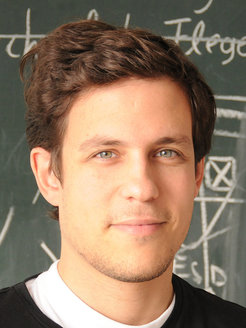
Ronny Thomale (born Feb 26 1982) studied physics and computer science at the Karlsruhe Institute of Technology (KIT) and the UC Berkeley. After a PhD at KIT and postdoctoral stages at Princeton University as a Humboldt Feodor Lynen Fellow and Stanford University as an SITP fellow, he started a tenure track professorship position at the EPF Lausanne in 2012. He was appointed associate professor in 2013 and full professor in 2016 at the Julius-Maximilian University of Würzburg, where he holds the chair for theoretical physics 1 (TP1).
The chemistry way towards quasiparticle physics
Abstract
Quasiparticles and collective excitations have been in the focus of condensed matter physics of the past decades. Their in-depth exploration has led to a significantly better understanding of the nature of matter in a quite general sense, beyond the boundaries of the materials-oriented disciplines. Following Carlo Beenakker, by taking “what nature offers” and to deeply explore the intriguing physics inherent to known and newly developed materials has led to the discovery and ultimately the deliberate control of many exotic phenomena, including topological insulators, Majorana fermions, skyrmions and polaritons, to name just a few. The impact of this research is not restricted to condensed matter physics or the related emerging field of quantum materials, it indeed drives our very fundamental understanding of matter.
In my talk I will demonstrate a path beyond “what nature offers”, extending the realm of quantum materials to “what is mathematically possible and chemically feasible”. I will show that the proper and precise arrangement of molecular building blocks in regular lattices, linked together by strong bonds with controlled electronic interactions, opens the door to advance electronics and optoelectronics, to manifest exotic physics with Dirac points and flat bands, and to establish new chemical concepts that allow us to face current global challenges. I will bridge our work on two-dimensional semiconductors to the rather novel class of crystalline two-dimensional polymers, a materials class that relies solely on the compounds of organic chemistry, and thus is abundant, non-toxic and potentially bio-compatible.
Thomas Heine
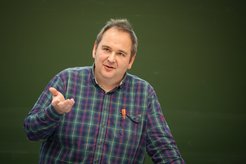
Chair of Theoretical Chemistry, TU Dresden
Head of Theoretical Chemistry, Helmholtz Center Dresden-Rossendorf, Leipzig Research Site
Professor of Theoretical Chemistry, Yonsei University, Seoul
email: thomas.heine@tu-dresden.de
Prof. Heine is Full Professor of Theoretical Chemistry at TU Dresden, Professor of Theoretical Chemistry at Yonsei University Seoul, and is head of the Theoretical Chemistry group of Institute of Resource Ecology, Helmholtz-Center Dresden-Rossendorf, Leipzig Research Site. In 1995, he received his diploma (physics) at TU Clausthal, and graduated in 1999 at TU Dresden (PhD in physics), with extensive research stay at Univeristy of Montreal (Canada) and University of Exeter (UK). After postdoctoral stages at University of Bologna (Italy) and University of Geneva (Switzerland) he obtained his venia legendi in Physical Chemistry at TU Dresden in 2006. In 2008 he started his research group as Associate Professor at Jacobs University Bremen, where he was promoted to Full Professor in 2011. From 2015-2018 he held the Chair of Theoretical Chemistry at Leipzig University, and in 2018 he accepted the offer for the Chair of Theoretical Chemistry associated with a group leader position a Helmholtz Center Dresden-Rossendorf. His research interest is located at the interface of chemistry and physics and focuses on the computational science of nanostructured materials, in particular of two-dimensional crystals and molecular framework materials.
Prof. Heine is a highly cited author with more than 300 peer-reviewed articles, an h-index of 77 (ISI) / 87 (Google Scholar). He gave more than 100 invited talks at international workshops and conferences.
He is elected member of the Review Board of Deutsche Forschungsgemeinschaft (DFG) and fellow of the Royal Society of Chemistry. He coordinates the DFG Priority Program PP 2244 “2D Materials: Physics of van der Waals [hetero]structures”, is deputy speaker of DFG CRC 1415 “Chemistry of Synthetic 2D Materials” at TU Dresden and coordinates the Marie S. Curie European Training Network “2Exciting”.



